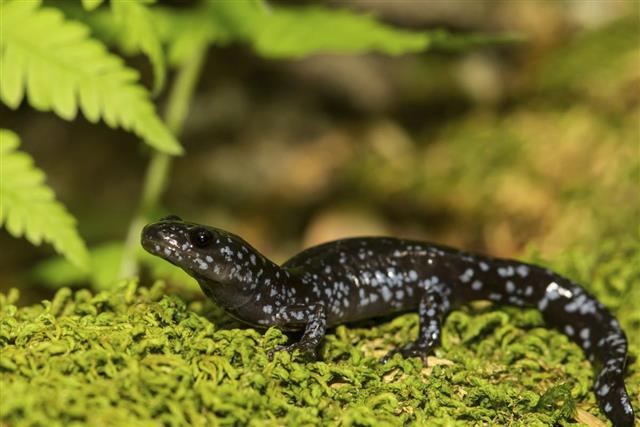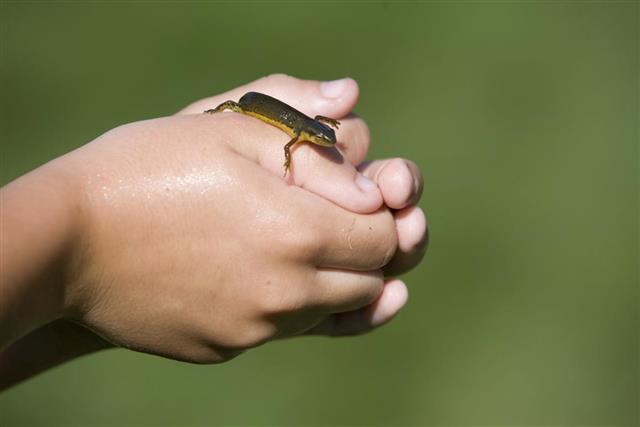
Unaware of what salamanders eat, people who keep them as pets tend to feed them stuff which is not good for their health. If you intend to keep a salamander as a pet,you should know what to feed and what not to feed to a salamander.
Salamanders are typically characterized by their slender body, short nose, long tail, and — most important of all — their unique ability of regrowing lost limbs and tail. It might come as a surprise for some of you, but salamanders have been thriving on the planet for more than 100 million years now. They have become popular as pets, mainly because of their docile nature and colorful appearance, and this, in turn, has made people curious about their behavior in both, wild and captivity.
Approximately 550 species of salamanders are found on the planet; some of these are aquatic in nature and seldom come on land, while some are totally terrestrial in nature and seldom enter water. Some of these species breathe through lungs, some through their skin, and there are some which breathe through their mouth. Most popular species of salamander include the Pacific giant salamander, spotted salamander, hell-bender, and the tiger salamander.
Salamanders – What Do They Eat?
The feeding habits of salamander vary in accordance to the species. Most of these are carnivorous in nature, and are known to feed on small invertebrates. The two important factors that play a crucial role in determining their feeding habits are: (i) their habitat and (ii) their type, i.e., aquatic, or terrestrial.
Salamanders are found all over the world, except for Australia, Antarctica, and some parts of Africa. Around one-third of the known species of salamanders are found in North America, with the Appalachians boasting of the largest concentration of these amphibians. Salamanders usually inhabit moist areas, like brooks, creeks, ponds, and other ground water sources. In their natural habitat, they feed on any organism that fits in their mouth; right from crickets and flies to cockroaches and frogs.
There are basically three types of salamanders: aquatic, semi-aquatic, and terrestrial. As the three categories suggest, some salamanders spend maximum time in water, some on land, while some of the species oscillate between land and water. Aquatic salamanders usually feed on small fish, frogs and tadpoles, insect eggs, and insects which fall in the water. Terrestrial salamander species, on the other hand, feed on worms, small insects, dragonflies, slugs, locusts, aphids, moths, snails; like we said anything that can fit in their mouth. In fact, some salamander species are also known to feed on spiders and centipedes.
Salamanders are not herbivorous at any stage of their life, not even at birth. For a week after their birth, they feed on the shells of their own eggs. While adult salamanders resemble lizards, their young ones are strikingly similar to tadpoles. Salamanders start off with freshwater crustaceans like daphnia, or cyclops (water flea), and as they grow, they move on to relatively larger insects, worms, and fish.
Salamanders as Pets – What to Feed Them?
If you intend to keep salamanders as pets, you will have to take a few things into consideration; diet being one of them. You will have to make sure that your pet salamander gets necessary nutrients from the food you provide. If it’s an aquatic salamander, you can feed it crustaceans, or water fleas. If it’s a terrestrial species, you can opt for various insect species.
You can either buy salamander feed from a pet store, or else, raise some insects on your own. Make sure that the insects you feed your pet salamander are live. Worms high in nutritional content, like kingworms and black-worms, are considered ideal salamander foods. If your pet salamander doesn’t hibernate in winter, you will have to provide it with nutritional supplements to sustain the low temperatures.
Salamanders only eat once or twice a week, so you need not be worried about their dietary habits. However, if your pet salamander is regrowing a lost limb, you will have to feed it on a regular basis.
Regardless of whether you have them as pets, or you see them in wild, there is no questioning the fact that salamanders are interesting creatures. Their ability to regrow lost limbs may be their claim to fame, but their dietary habits are no less interesting. With quite a few wildlife enthusiasts studying these organisms, it wouldn’t be surprising if we are introduced to a new facet of their life some time in the near future.



